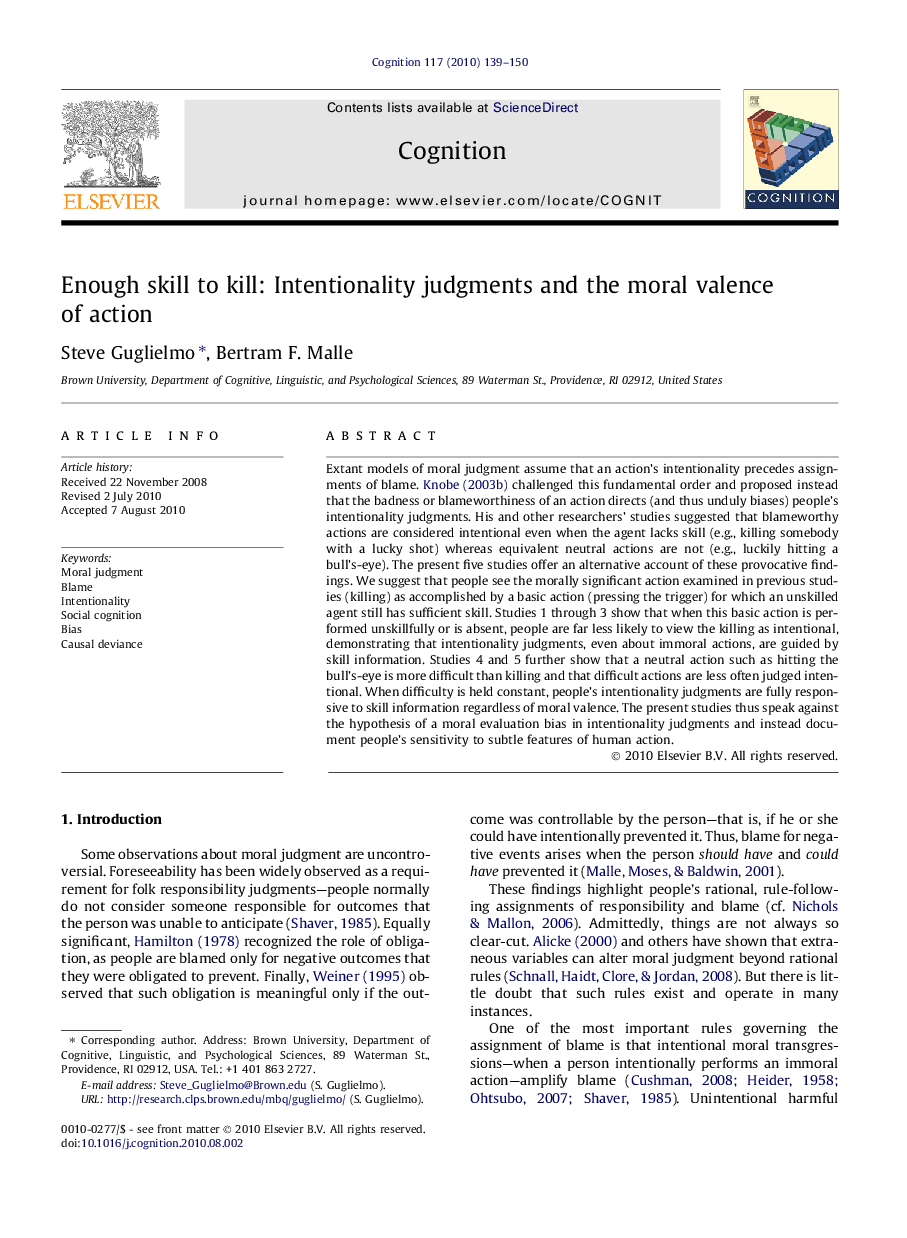| کد مقاله | کد نشریه | سال انتشار | مقاله انگلیسی | نسخه تمام متن |
|---|---|---|---|---|
| 926611 | 921886 | 2010 | 12 صفحه PDF | دانلود رایگان |

Extant models of moral judgment assume that an action’s intentionality precedes assignments of blame. Knobe (2003b) challenged this fundamental order and proposed instead that the badness or blameworthiness of an action directs (and thus unduly biases) people’s intentionality judgments. His and other researchers’ studies suggested that blameworthy actions are considered intentional even when the agent lacks skill (e.g., killing somebody with a lucky shot) whereas equivalent neutral actions are not (e.g., luckily hitting a bull’s-eye). The present five studies offer an alternative account of these provocative findings. We suggest that people see the morally significant action examined in previous studies (killing) as accomplished by a basic action (pressing the trigger) for which an unskilled agent still has sufficient skill. Studies 1 through 3 show that when this basic action is performed unskillfully or is absent, people are far less likely to view the killing as intentional, demonstrating that intentionality judgments, even about immoral actions, are guided by skill information. Studies 4 and 5 further show that a neutral action such as hitting the bull’s-eye is more difficult than killing and that difficult actions are less often judged intentional. When difficulty is held constant, people’s intentionality judgments are fully responsive to skill information regardless of moral valence. The present studies thus speak against the hypothesis of a moral evaluation bias in intentionality judgments and instead document people’s sensitivity to subtle features of human action.
Journal: Cognition - Volume 117, Issue 2, November 2010, Pages 139–150